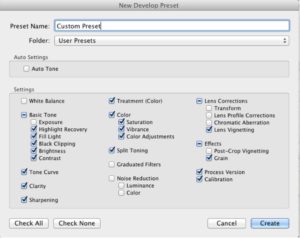According to Pew Research Center, over 35% of adults now use Instagram. It’s the fastest growing social network on the scene these days and most use it to keep up with friends, look at food, and maybe do some shopping.
It’s also a great way to develop your personal brand and get your name out there.

Whether you’re trying to become the next big thing in influencing or want to show off your social chops before kicking off a job search, you’ll need to create a cohesive feed that represents you. A polished, organized version of you, that is.
Here are some tips for kicking your “gram” up a few notches, by virtue of being consistent, intentional, and ideally, yourself.
How to take your Instagram feed to the next level
1. Pick an overall aesthetic
The basis of a great Instagram account is the overall vibe. Vague, we know. But, you need to develop a consistent look and feel.
Do this by considering your feed in terms of the grid.
On a broader level, how does each image fit in with the others? Use similar colors, subject matter, composition, angles, and fonts in your posts. This doesn’t mean everything is the same, but it does mean that you should avoid a haphazard scrapbook-style feed.
Pick a handful of colors to use in your feed — no more than five. The idea is, you’ll have these little pops of the same colors that connect when photos are displayed in your grid.

2. Be consistent with your filters
And by consistent, what we mean is, you should use the same filter for all of your images. After you’ve made some decisions regarding your overall aesthetic, it’s time to think about creating a filter that flatters.
The filter you use functions as a sort of visual personality. It makes your feed feel more cohesive and organized.
It’s been a long time since Instagram’s default filters were enough to impress. As such, if you’re going for that professional vibe, you’ll need to do a custom job.
Apps like VSCO and Lightroom make it easy to do this—and you can save your settings for long term use.

VSCO allows you to select preset filters, then customize to build your own. This means it’s relatively easy to set up a custom filter without starting from scratch.


Should you pay for custom Instagram filters?
read now3. Post with a target audience in mind
Marketing — whether you’re just marketing yourself or growing a business — is all about understanding your target audience. The better you know these folks, the more effective your content.
To figure out who that audience is, you need to ask yourself a few questions first. For example:
- What am I selling? This could be yourself—if you’re trying to promote your services or showcase knowledge about a certain topic. Or, in a more straightforward sense, a literal product.
- Who do I want to attract? I.e. who do you want to hire you, become a client, or make a purchase?
- What is my audience looking for?
- How will I attract that audience? In this case, you’ll want to scour Instagram profiles both from your ideal customers and the more successful people they follow. Look for aesthetic themes, a general tone used in captions, colors, and subject matter.
4. Figure out your content buckets
What is a content bucket? Well, the term refers to the collection of general topics covered in your posts. Ideally, you’ll pick an overarching theme. Maybe something like wellness, beauty, fitness, or design. And from there, you’d choose a few sub-topics that relate to that high-level theme.
Say, you’re going for a wellness vibe. In that case, your buckets might be DIY recipe demonstrations, product showcases, and a look at your workout or skincare routine. These things are loosely related and can be further unified by sticking to a color scheme and filter, as mentioned above.
If you’re a designer trying to attract new clients, the bulk of your feed should be images of your work. Other buckets might include videos or behind the scenes content. And, maybe some of your favorite images from art exhibits you went and saw.

How to earn money with Instagram
read now ►5. Get a planning app
Preview is a popular choice. As are Plann, Buffer, and countless others. The benefit of a scheduling app is, you’ll have the ability to slow down and look at your feed the way it would look if it were already live on Instagram.

As you upload your content, you’ll be able to rearrange it. The idea is to create some movement and flow. You’ll see in the below images, Preview allows you to move images around.
Notice how the examples contain similar colors, the same filter, and a loose affiliation with a theme? That’s great—but keep in mind, you’ll want to put them in an order that creates interest.
Some users like to go about this really systematically:

While others aim to create a sort of planned chaos.

We liked Preview best, as far as visual planning is concerned, but Buffer — especially their paid plans, also offers some notable benefits. You’ll gain Instagram insights into which posts are performing best. This eliminates some of the guesswork that comes with selecting hashtags and subjects.

Top 5 apps that’ll make you an Instagram model
Read Now ►Wrapping up
If you’re new to Instagram, or just new to considering the platform as a strategic approach to personal branding, this can seem overwhelming. In reality, crafting that catalog-look isn’t hard at all. It’s a matter of getting organized and keeping things consistent.

